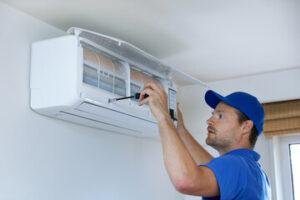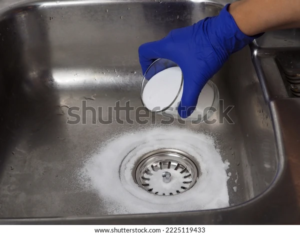Industrial Staffing Agencies provide expertise in sourcing, hiring, and retaining qualified temporary workers. They also stay up-to-date on industry regulations, reducing compliance risks for client businesses.
Finding skilled workers can take time. Not all candidates are actively searching for jobs and may be reluctant to work in a seasonal role. Staffing agencies search both active and passive candidate pools for industrial talent.

The staffing industry is a competitive one, and it’s essential for businesses to stay up-to-date on industry trends, customer preferences, technological advancements, and regulatory changes. Those that don’t adapt to the changing landscape will lose their edge and fail to meet their goals. In addition, they’ll find it difficult to recruit and retain talent and may suffer from a shortage of skilled workers. To remain competitive, you’ll need to implement a recruitment strategy that combines technology and traditional methods. This will help you streamline the hiring process and make your business more efficient.
The first step is to determine your business’s requirements. Ask your prospective agency if they can provide the specific services you need and what their qualifications are. If they can’t, it may be best to look elsewhere. The right agency will have a deep understanding of the industry and the technical skills required for specific positions.
Recruiting and hiring employees can be a time-consuming and complicated task. A good industrial staffing agency can reduce this burden by sourcing and screening candidates for you. They can also handle payroll, workers’ compensation, and other administrative tasks.
Another benefit of working with a light industrial agency is their ability to provide flexible work options for candidates. Not all candidates are actively looking for full-time jobs, and many prefer the flexibility of a temporary position. Recruiting agencies know how to attract these candidates by searching for them on social media and through their own internal database.
Staffing agencies can provide workers for temporary or permanent positions in manufacturing, warehousing, logistics, construction, and other industries. These workers can help you meet production targets and maintain quality standards in dynamic industrial environments. They can also help you avoid a costly mistake like hiring unskilled laborers to perform heavy industrial jobs, which can lead to damages and losses in the tens of thousands of dollars.
Placement
Industrial staffing agencies are a critical resource for businesses in the manufacturing, construction, and production sectors. They specialize in placing candidates with technical skills, certifications, and hands-on experience in a wide variety of positions, including welders, machine operators, assemblers, material handlers, quality control inspectors, and more. They are also expert at managing production peaks, accommodating seasonal fluctuations, and responding to unexpected challenges. This flexibility allows clients to focus on enhancing operational efficiency and achieving business goals.
Recruiters at industrial staffing agencies are experts at streamlining the screening and selection process to ensure that they find candidates who have the necessary qualifications and experience. They may also offer skills training and development to help candidates grow in their careers. They also work closely with client organizations to understand their culture and workforce needs, which helps them select candidates who will be a good fit for the company.
Staffing agencies also provide temporary staffing solutions for companies with short-term staffing needs. They maintain a pool of candidates who are ready to fill temporary assignments, so that they can provide timely solutions for busy manufacturers and contractors. They can also facilitate permanent placements by identifying candidates who are interested in long-term employment.
In addition to supplying qualified temporary workers, industrial staffing agencies can also provide support services that help companies comply with labor laws. They can manage timecards, track overtime, and ensure that employees receive the appropriate wages. They can also help companies create a safe and healthy workplace by providing training in best practices. They can also take care of administrative tasks, such as submitting payroll and handling tax paperwork. This can save businesses valuable time and money.
Training
In addition to recruitment and placement, industrial staffing agencies also provide training services for the employees they place. These services are designed to help new hires adapt to the client company’s culture and work environment. They can include technical and safety training, as well as soft skills development. In order to ensure that the employees they place have the necessary skills, the staffing agency may even conduct a skills assessment to identify the best candidates.
Aside from providing temporary workers for industrial businesses, staffing agencies can also provide skilled employees to help them cope with unforeseen situations like labor shortages or strike. During such times, a staffing agency can handle the influx of orders and ensure that production continues smoothly. To find the right candidates, a staffing agency should have an extensive database of skilled employees ready to be deployed at short notice. Aside from this, a staffing agency should be able to offer a variety of other benefits to its clients.
Staffing agencies are experts in their field, so they have a solid understanding of the industry and the specific requirements of their clients. They can also provide a wide range of services to meet their clients’ needs, including payroll management, compliance with labour laws, and safety standards.
Many manufacturers find it difficult to recruit and hire permanent employees because of the current tight job market. Industrial staffing agencies can take care of the recruitment process and save companies time and money. In addition, they can take care of the administrative tasks associated with hiring employees, which can be a huge burden for some companies. The result is a more efficient, productive business with the right employees in place.
Business structure
The business structure you choose for your staffing agency has far-reaching consequences. It can affect your personal legal liability, how you raise money for the firm, and what you and your associates will pay in taxes. Therefore, it is important to consider the implications of each option before making a decision. You should also create a business plan to help you keep on track as your agency grows.
The level of market demand and prevailing industry trends can significantly impact a staffing agency’s profitability. Keeping a close eye on these trends allows entrepreneurs to position their services strategically, and to take advantage of lucrative opportunities. Streamlining internal processes, optimizing efficiency, and controlling overhead costs are all essential to driving profitability.
Staffing agencies can provide workers for a wide range of industries and functions. They can offer temporary or permanent staffing solutions, or both. They can also provide specialized skills, such as IT or healthcare workers. Some may specialize in certain types of jobs, such as light industrial or office/clerical.
There are a number of different ways to make money in the staffing industry, including selling talent and services to businesses, recruiting candidates, and establishing relationships with clients. In addition, staffing agencies can also earn revenue from the commissions they receive on candidate placements.
To make a profit in this business, you must first identify potential clients and build long-term relationships with them. This will allow you to fill positions quickly and efficiently. It is also important to invest in marketing your business and to set up a website to promote it. A well-designed website will increase the likelihood of attracting new customers and generating sales.
Fees
Industrial Staffing Agencies typically charge a fee per hour that their employees work. They use this money to cover their costs of sourcing, recruiting, and managing the temporary or contract workers they employ. They also pay for taxes and insurance. Depending on the position and agency, this mark up can range from 45-55% of the worker’s base hourly rate.
When hiring industrial staffing agencies, it’s important to find one that has experience in the industry and understands the type of work you require. The best industrial agencies will have a proven track record and can provide references from satisfied clients. They will also have an established relationship with local talent pools and access to a broad pool of candidates.
If you’re unsure of what to expect from an industrial staffing agency, ask them about their safety policies and practices. Inquire about their training programs, and whether they have an on-site safety team to assist with workplace accidents. It’s also helpful to know how long they’ve been in business and the types of positions they have filled in the past.
In addition to being a trusted partner for companies with temporary workforce needs, industrial staffing agencies can help reduce the risk of costly compliance issues. By becoming the employer of record for their temporary and contract workers, they can take on the burden of ensuring that their employees comply with federal, state, and local regulations.
While many people believe that industrial staffing agencies only focus on short-term placements, the reality is that they can help with both long-term and temporary job placements. Many agencies specialize in finding skilled tradespeople, technicians, and engineers to meet long-term staffing needs. They can also provide temporary or contract workers to meet immediate production demands and help companies manage seasonal variations in demand.






